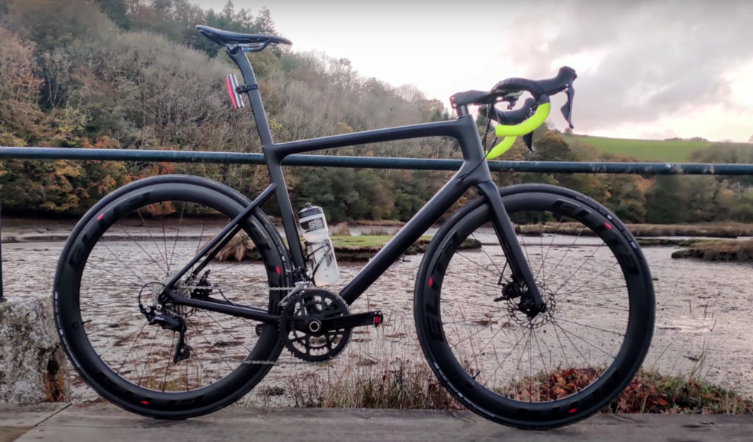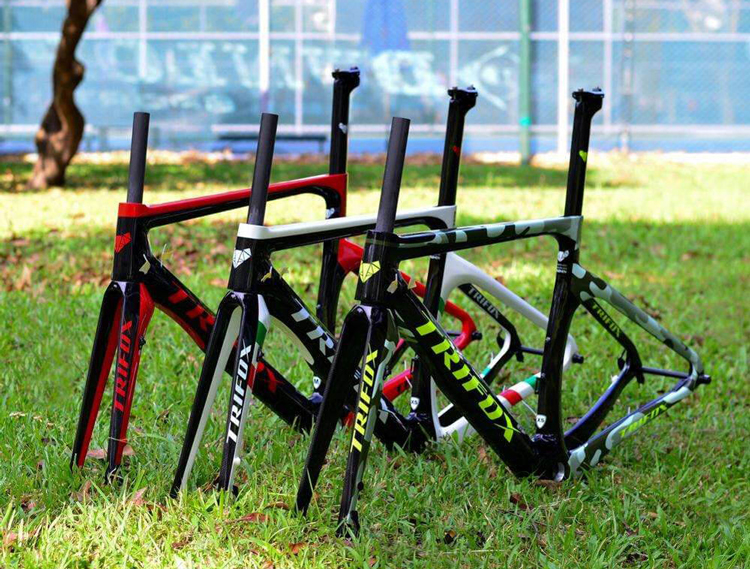Carbon fiber is an incredible material that has revolutionized the design and performance of bike frames. It is lightweight, corrosion resistant, can be shaped into any desired shape and is very strong in use. Claims that carbon fiber frames and related components are generally brittle and unreliable are not true, they are merely alarmist. It is strong enough to be used in F1 and the aerospace industry, and naturally in the bicycle field.
When made by a trusted manufacturer and used correctly, there’s no reason a carbon frame shouldn’t give you enough miles to ride happily, and many manufacturers now offer lifetime warranties on frames. No matter what frame material you choose, be it carbon, steel, aluminum, or titanium, quality is key, and good quality is always more durable. When riding a carbon frame bike, you don’t need to deliberately change the way you ride, but you can pay attention to the details of the daily maintenance and use of some carbon fiber bikes.
Buy a torque wrench
Despite the incredible force in the design direction, squeezing can easily damage carbon fiber, such as over-tightening bolts and clamps, handlebars and seatposts are the most common causes of carbon fiber frame damage. If you have a carbon fiber bike, a torque wrench is necessary to ensure you don’t tighten components with more torque than recommended. If you’ve owned a metal frame bike before, you might be surprised how little force is required to assemble and tune a carbon bike.

Use carbon assembly paste
Another disadvantage of the relatively small torque required for carbon frames and components is that they tend to slip out. This especially affects the seatpost. Don’t risk trying to tighten the seatpost with extra, more force, you should use carbon assembly paste. It is a gel containing fine particles, similar to a film, that increases friction between contact surfaces to prevent slippage. Assembly paste and torque wrenches are a must for carbon fiber owners.
Handle with care
The damage to the carbon frame caused by an accident and impact is usually difficult to predict and avoid in advance, but some collisions that will damage the carbon fiber can be easily avoided. A common occurrence is for the handlebars to spin over and hit the top tube of the frame, which often happens when the bike is inadvertently lifted. So be careful not to let this happen when picking up your bike. In addition, try to avoid stacking bicycles on other bicycles, and do not use the seat part to lean against poles or posts, so that the bicycle will easily slip and cause a collision with the frame.
Keep it clean
Routine cleaning can give you a chance to take a closer look at your bike for obvious signs of damage. Regardless of the frame material, this should be your routine on the ride. Of course, rough cleaning is also to be avoided, which will damage the epoxy resin wrapped around the carbon fiber. If in doubt about how to clean your bike scientifically, you can ask the manufacturer for advice. Any bicycle-specific degreaser or cleaning product, as well as old-fashioned mild soapy water, should be used appropriately.
Avoid squeezing
As mentioned above, try not to over-tighten parts, carbon fiber can easily be damaged by extrusion. So special care needs to be taken when clamping the frame tube with a repair rack or a bike rack. The bike should be secured with minimal pressure, or a protective covering can be wrapped around the frame. Of course, you can also consider another way of transporting bicycles. If you want to take your bike on a plane, we strongly recommend packing it in a rigid special case.

Don’t twist
For metal frames and components, such as during the installation of handlebars and seatposts, it is normal and acceptable to give a certain amount of rotation or pull to fine-tune after fixing. But this step can cause damage on carbon fiber cars and needs to be strongly avoided. The correct way is to use the recommended torque value and use assembly paste. If the position and angle of the parts need to be adjusted, the parts should be completely Panasonic in advance.
Measure twice, cut once
If you need to cut carbon fiber parts, such as handlebars and the entire seatpost, remember to take careful and precise measurements and wrap with tape to mark where to cut. Cutting requires a special carbon saw blade, which prevents the fibers from tearing and fraying . Never mark the seatpost where you need to cut it with a pen or a sharpie, as even the smallest scratches can damage the carbon fiber. Instead, you can mark the cut location by wrapping it with insulating tape.
Avoid the chain getting caught and stuck
Many people have encountered the situation of chain drop, especially in the case of incorrect shifting. The worst case scenario is when the chain is dropped and the chain gets stuck between the smallest chain ring and the chain stays and gets stuck instantly. For carbon fiber bike, this is a great “pain”. When this happens, stop pedaling immediately and avoid further exertion. When you get home, thoroughly clean and re-lubricate your drive train. Check your chain for wear, elasticity, etc. Best to replace if necessary.
Replacing the brake pads
If you alternate between alloy training wheels and carbon fiber racing wheels, it is essential to replace your brake pads accordingly. Although there are dual-purpose brake pads, metal debris left on the surface of the pads can easily scratch and destroy carbon fiber rims.
If the worst happens
In the event of a crash or accident, unlike the metal frame where the dent or bending damage can be clearly seen, the carbon fiber may appear to be intact on the outside, but it has actually been damaged. If you have such an impact and are worried about your frame, be sure to ask a professional technician to do a professional inspection. Even serious damage can be repaired very well, even if it’s not aesthetically perfect, but at least it’s safe and functional.




















































































